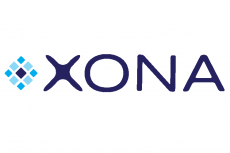|
By Cody Jaster
Until recent decades, operational technology (OT) – a principal element in manufacturing – remained segmented from information technology (IT). OT systems, responsible for monitoring and controlling physical machinery and equipment, were manually managed by skilled workers, operated in isolation, and secure in their simplicity.
|
By Jeff Aliber
The demand for technology that can support secure user access, both remote and onsite, has expanded beyond IT environments to include the operational technology (OT) and industrial control systems (ICS) that enable organizations in a variety of critical infrastructure (CI) sectors to function. However, the priorities of IT environments (i.e., the confidentiality, integrity, and availability of data).
|
By Jeff Aliber
SANS released its annual ‘State of ICS/OT Cybersecurity’ report in October 2022. It reflects survey results from 332 ICS/OT organizations representing a range of industrial verticals.
|
By Bill Moore
A new report on Operational Technology (OT) equipment flaws from automated cybersecurity software company Forescout outlines the alarming state of OT security. The report titled OT:ICEFALL was crafted by researchers at the company’s Vedere lab. It breaks down 56 vulnerabilities affecting 26 devices from 10 vendors in OT.
|
By Bill Moore
Troubling new malware designed to facilitate attacks on a wide array of critical infrastructure – from oil refineries and power plans, to water utilities and factories – is raising concerns for its versatility. The malware, named Pipedream by Dragos and Incontroller by Mandiant, who have both tracked and researched the toolkit, is potentially capable of gaining full system access to multiple industrial control systems (ICS) and supervisory control and data acquisition (SCADA) devices.
|
By Bill Moore
There are many significant technology-enabled changes taking place in industrial environments today. Smart factories and Industry 4.0. The Industrial Internet of Things (IIoT). The convergence of information technology (IT) and operational technology (OT). All of these things are introducing digital technologies at a fast pace to improve operations, increase productivity, enhance oversight, and increase profitability.
|
By Bill Moore
US Officials warn of potential ransomware attacks in response to increased sanctions on Russia and have asked state and local officials to consider how ransomware attacks could disrupt the provision of critical services. “Right now, the biggest concern we have are preparations for potential impacts to US utilities and industrial critical infrastructure, (Dragos)”
|
By Bill Moore
Russian hackers are attempting to broadly penetrate Ukrainian infrastructure to disrupt critical services such as electricity, transportation, finance, and telecommunications. US Government urges US Critical Infrastructure owners to harden their systems and implement a “shields up” strategy. As tensions escalate, Russian cyberattacks could seek to disrupt US electricity, gas, and other systems, warn the FBI and Department of Homeland Security.
|
By Bill Moore
Industrial companies worldwide are adopting capabilities that allow for remote operations. The pandemic has led companies to consider how they can reduce an onsite workforce while continuing with normal operations. Likewise, the worker shortage is leading companies to think in terms of a flexible workforce that may include remote staffing and flexible resourcing.
|
By Bill Moore
As industrial organizations continue to embrace change by leveraging the latest technologies into their daily operations and production cycles, they have also been tasked with embracing remote and hybrid work environments – all while maintaining operational continuity. Utilizing advanced technologies has enabled these organizations to reduce expenses, expedite production time, and elevate customer service levels.
- September 2024 (1)
- April 2023 (1)
- October 2022 (1)
- July 2022 (1)
- April 2022 (2)
- March 2022 (1)
- February 2022 (2)
- January 2022 (1)
- December 2021 (1)
- August 2021 (1)
- May 2021 (1)
- April 2021 (1)
- January 2021 (2)
- February 2020 (1)
XONA is the frictionless user access platform purpose-built for critical infrastructure. Its proprietary protocol isolation and granular controls deploy in minutes, immediately eliminating traditional attack vectors while providing authorized users full and secure control of their operational technology from anywhere. XONA is headquartered in Annapolis, MD and operates its research and development team in Ann Arbor, MI.
Xona Technology:
- Critical System Gateway: Xona Critical System Gateway (CSG) is a browser-based, hardened platform that uses protocol isolation and encrypted display to securely deliver access to any industrial system or application. Xona reduces the attack surface and risk of data loss and prevents unwanted intrusions by securely streaming applications into a standard web browser. Xona architecture is built from the ground up with hardened components.
- ROAM: The Xona Remote Operations Access Manager (ROAM) provides centralized administrative control over remote site gateways (CSGs). ROAM provides a simple dashboard view of all CSGs online and offline, as well as CSG-managed and trusted system connection by each isolated protocol session.
Comprehensive User Visibility and Access Control to Industrial Control Systems.







